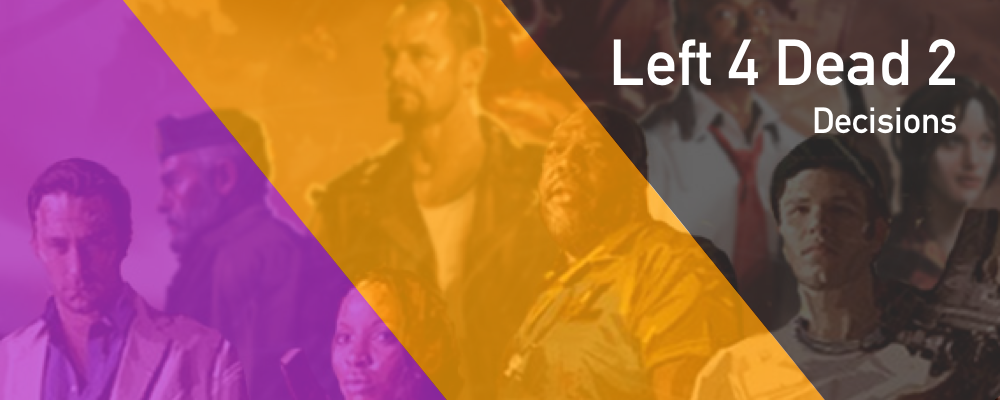Decisions, decisions. There are a lot to be made in a project of this scale. A big question we tackled was ‘why did we choose Valve Software’s Left 4 Dead 2?’

For starters we’ve played it a lot and love the gameplay. It’s a very well received game so it has a decent sized audience to cater for. There are many reasons for its success but I would argue its main strength is down to its excellent team-based mechanics - cooperation in a zombie apocalypse? What’s not to love!
True, Left 4 Dead 1 started it all, but the sequel brought out the best in the series with new weapons, new infected and new environmental hazards. In addition, Valve has made the game editing tools available for free and easily downloadable through their Steam platform. The tools are more or less excellent with plenty of tutorials around including Valve’s official developer’s wiki. Additionally, the AI way-pointing is made so simple through automation. All these factors make L4D2 a very viable choice.
Another question was which of L4D2’s modes were we going to cater for? Luckily, Valve performs surveys in-game and collects data from users which is made available. This particular tweet from the developers helped immensely:
"What were people playing last week on the PC? 43% Coop - 40% Versus - 6% Survival - 5% Versus Bleedout - 3% Scavenge - 3% Realism Versus"
The last thing we wanted was to spend a load of effort on making levels only for them not to be played. In this respect, gauging the potential market using officially published stats was very useful indeed. A campaign usually demands a minimum of three levels to tie the parts of an adventure together. Valve’s official maps tend to be around five maps long, so we decided to shoot for the stars and try that. On top of this, to make maps for the versus mode is relatively simple once you have a campaign as the two share a lot of common ground. All in all, the project definitely benefits from all these plus points.

